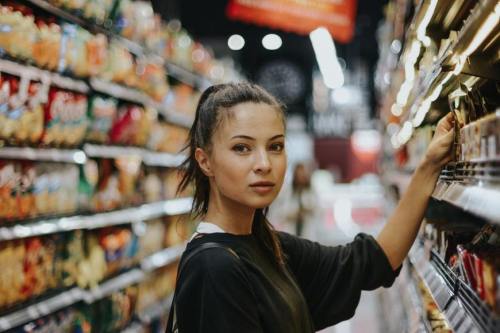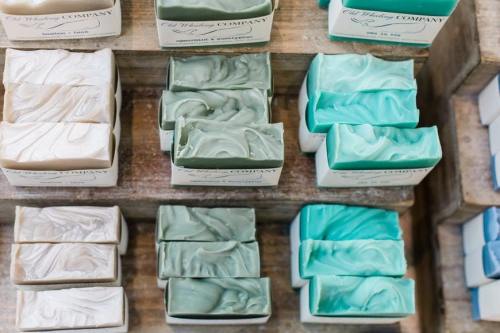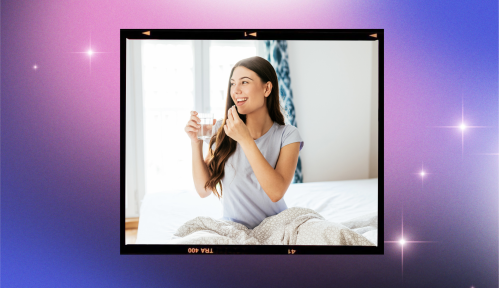I failed #PlasticFreeJuly—and I’m so glad I did
Here, one writer documents the ways she tried to strip plastic from her daily routine for the month of July. Spoiler: It was even harder than she thought.

Last month, the #PlasticFreeJuly hashtag started popping up on some of the Instagram accounts I follow. At the time, I’d been deeply affected by The Guardian‘s series on plastic, and after I learned that that majority of plastic—even the stuff we toss in the blue bin—doesn’t get recycled (only 9 percent does), I made some simple changes (reusable mugs, cotton grocery totes) to reduce the amount of plastic I consumed. But a whole month of aggressively avoiding plastic? Now that was a greater, more daunting challenge.
It’s not that I think plastic is the devil. Plastic can be good! It’s used in medical devices, cars, tools, and thousands of other items that make modern life possible. The problem, in my view, is that many of us are careless with plastic. It’s cheap, convenient, and omnipresent.
As I embarked on #PlasticFreeJuly to see if I could radically reduce my plastic use, I knew I wouldn’t be able to avoid plastic entirely. But maybe, just maybe, I could avoid buying it or consuming it. Here’s how things went. (Spoiler: not so smoothly.)

Groceries and food
Shopping at the farmers market put plastic-free life within reach. I used Sunshine Series produce bags and brought my own containers for berries. Simple. Although the majority of farm stands still offered to wrap my produce in plastic, I politely declined. I felt like an earth-mama consumerist goddess.
At the usual grocery store, things were considerably more difficult. Although I could fill up on rice, quinoa, and beans in the bulk section, plastic was everywhere else. It held my almond milk, skyr, tempeh, tofu, frozen peas, peanut butter, and veggie burgers. Much to my frustration, Whole Foods switched its pasta packaging from cardboard boxes to plastic bags, so I bought the remaining boxes of penne and wondered how to buy pasta from now on.
And that’s just the obvious packaging. For instance, most frozen-food boxes can’t be recycled because they have a plastic coating. And as for my bougie vegan-“cheese” corn chips? Delicious, but I thought about how their packaging would outlive me, and I took a pass. I did, however, cave and buy my son’s favorite frozen pupusas, which have recyclable packaging but are wrapped in non-recyclable plastic. I also bought ice cream cones, not pints, at the local Jeni’s; this produced no waste but easily cost twice as much as a pint would have.
At coffee shops, my Frank Green cup earned me 50 cents off my latte. Takeout, though, was tough. Aside from our local pizza place, which delivers pies in the usual cardboard boxes, no local restaurants offer plastic-free packaging. Compostable bioplastic is popular, but it actually isn’t compostable—or recyclable. So we cooked meal after meal at home, which was delicious and cheaper, but time-consuming. On the occasions when my family did eat out, well-meaning servers brought us plastic straws and cups of water. I soon learned to tell restaurant staff about our plastic-free mission, which lead to some good conversations. I also started to carry my own set of utensils so that I never had a reason to reach for a plastic fork. Does that make me weird? I prefer the term unique.
Kid stuff
During the day, we use cloth diapers. (For our son, not ourselves. We’re not into adult diaper play.) Cloth dipes are very easy to use and they give babies poofy little butts. I’m a big fan. They leak at night, though, so our son wears disposables to bed; those went into a plastic trash bag that gets hauled off to the landfill. It is a poop-covered cycle of plastic and environmental guilt. Here, I failed the challenge night after night.

Personal care
My first goal was to use up the shampoo and what-have-you already in the home. So I suppressed the urge to go on a zero-waste buying spree, and instead, I used up what I have. Boring but successful.
When it did come time to replace some items, it was hard to avoid plastic—but not impossible. For makeup, I chose Aether Beauty’s zero-waste eyeshadow palette and replaced my usual SPF moisturizer with Iris&Romeo (glass packaging!). Toothpaste tabs were tempting, but my spouse isn’t on board, so I went with Wildist’s toothpaste; it’s packaged in recyclable aluminum tubes. I picked up some bars of soap instead of body wash; they’re not quite as nice as my usual fancy body wash, but the swap didn’t feel like a big deal.
Overall, though, I realized that my beauty and grooming routine is the biggest source of my plastic use. Much of it can’t be recycled. I vowed to make my future purchases more sustainable—as in bamboo toothbrushes or this glass jar of Savor Beauty’s Yuzu Lemonade Peel—or go without. Beauty products are nice and all, but not if they’re going to wind up in a landfill.
Period care
Cloth pads always seemed gross to me, but a centuries-old pile of used plastic maxi pads is even worse. So I bade adieu to disposable tampons and pads. Instead, I committed to using a silicone menstrual cup, cloth maxi pads, and Thinx for backup. The yuck factor was lower than I’d anticipated, I didn’t have to change the cup as often as a tampon, and—bonus!—the cloth pads didn’t irritate my skin. It was an un-glamorous win.

Housekeeping
I like a clean house, but I am not one of those “vinegar does it all!” people. If you ask me, vinegar makes your house smell like a kombucha brew gone wrong, and so I favor non-toxic-yet-actually-formulated cleaning products. When my all-purpose spray ran out, I ordered from Truman’s, a startup that ships concentrated household cleaning products in recyclable cartridges. A big improvement, but still some plastic. Next time, I’ll probably just order Blueland tablets and use them in my existing spray bottles.
Laundry created a different challenge. I already don’t use dryer sheets, which helped me avoid plastic (they’re made of polyester). I do use liquid detergent, however, and when it ran out, I wanted to refill at my local zero-waste supply store. Unfortunately, the store doesn’t offer unscented detergent, and anyway, at 30 cents an ounce, the citrus stuff cost almost three times as much as my usual fragrance-free Tide. I considered ordering Dizolve, a strip of detergent that dissolves in water, but needed to do laundry ASAP. So Tide, in its plastic bottle, it had to be.
Similarly, to plant more tomatoes in our garden, I needed to buy soil. All of it was packaged in plastic, but I had to buy it if we were going to grow our own vegetables. The issue, as I observed time and time again, is that plastic-free packaging is either prohibitively expensive or it just doesn’t exist—and unless consumers demand alternatives, plastic will continue to be the default.
The bottom line
At the end of the month, the balance is decidedly more #july than #plasticfreejuly. Sure, there were plenty of successful days, during which I felt like the Megan Rapinoe of waste reduction. They were balanced out, however, by days when I couldn’t help but use the stuff. Maybe that’s the point: Plastic is unavoidable, but we can endeavor to use it only when needed. The experiment made me more aware of not just how much plastic I use, but how I use it—and how much of it isn’t necessary. Working from a strict definition, I failed the challenge of living plastic-free. But from a perspective-altering standpoint, I’m considering July a win.
Easy ways to say “no plastic, please” include shampoo bars and nontoxic cleaners that will actually save you money.
Sign up for the Well+Good SHOP Newsletter
Get exclusive deals on wellness, beauty, fitness, and food products that have been hand-picked by our editors.
Got it, you've been added to our email list.







